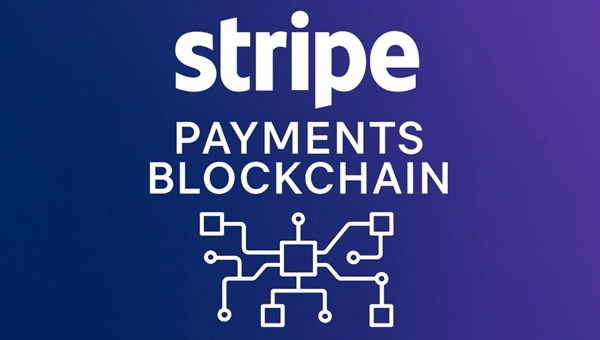Stripe’s no stranger to crypto. Back in 2018, the company flirted with Bitcoin payments but backed off, citing high fees and slow confirmations. Fast forward to 2024, and Stripe jumped back in, integrating USDC stablecoin payments for merchants. Then came two blockbuster acquisitions: Bridge, a stablecoin platform, for $1.1 billion in October 2024, and Privy, a crypto wallet developer, in June 2025. These moves laid the foundation for Tempo, a blockchain tailored for high-speed, low-cost transactions.

Unlike many fintechs piggybacking on Ethereum or Solana, Stripe is building Tempo from the ground up as a Layer-1 network. That means full control over how transactions are processed, fees are set, and settlements are handled. A job posting spotted on the Blockchain Association’s careers board spilled the beans: Tempo is a “high-performance, payments-focused blockchain” developed by a tight-knit team of five. Though Stripe’s keeping details under wraps, the industry’s buzzing with anticipation.
Tempo’s built for business. It will run on Solidity, Ethereum’s primary smart contract language, allowing easy adaptation of existing Ethereum-based applications. Ethereum processed $1.4 trillion in transactions last year, according to CoinMetrics, and compatibility could encourage rapid adoption among developers and businesses already active in that ecosystem.
Transaction speed and cost are central to Tempo’s pitch. Ethereum fees can climb above $50 during congestion, based on Etherscan data, untenable for merchants processing thousands of payments daily. Tempo is expected to offer predictable fees and near-instant settlement.
Stripe’s existing reach gives it a leg up. Processing $1 trillion annually across 135 currencies, Stripe powers payments for millions of businesses. Tempo could slash costs for cross-border transactions, which often face 3-5% fees and multi-day delays via SWIFT, according to World Bank data. Stablecoin payments on Tempo could settle in seconds, making it a no-brainer for global payroll or subscription services.
Stripe’s not going it alone. Paradigm, a crypto venture capital firm led by Coinbase alum Matt Huang, is a key partner. Huang, a Stripe board member, brings deep crypto expertise, with Paradigm’s portfolio boasting heavyweights like Uniswap and Optimism. This collaboration signals Tempo’s serious ambitions, blending Stripe’s fintech muscle with Paradigm’s blockchain know-how.
The timing couldn’t be better. The U.S. passed the GENIUS Act in July 2025, clarifying stablecoin regulations and sparking interest from tech giants like Meta and Apple. Stripe’s moves, snapping up Bridge and Privy, and now building Tempo, put it ahead of rivals like Circle, which is working on its Arc blockchain for stablecoin payments. But Tempo’s laser focus on merchant needs, from checkout to settlement, could give it an edge over broader platforms.
Building a blockchain from scratch is no small feat. Solana and Avalanche already boast thousands of transactions per second (TPS) compared to Ethereum’s 15 TPS. Stripe must prove Tempo can match or beat these rivals while staying secure and compliant. Regulation is another wildcard. Stablecoin platforms face growing scrutiny in the U.S. and EU, where the MiCA framework rolled out strict rules in 2024.
Then there’s the question of decentralization. Will Tempo be a public blockchain open to all, or a walled garden for Stripe’s enterprise clients? The job posting’s nod to Fortune 500 experience hints at a controlled system, which might alienate crypto purists who champion open networks. Plus, there’s no word yet on whether Tempo will have its own token or lean on stablecoins like USDC.
Final Thoughts
Stripe’s playing its cards close to the chest, likely to dodge regulatory heat or premature hype. The job posting vanished after media coverage, suggesting a stealth approach. Still, Tempo’s potential is massive. By weaving blockchain into its payment stack, Stripe could challenge legacy networks like Visa and Mastercard, which processed $12 trillion in 2024 but face pressure from crypto’s rise.
For businesses, Tempo offers faster, cheaper transactions. For developers, its Ethereum roots mean easy adoption. For the crypto world, it’s a sign that fintech giants are diving in. As Stripe rolls out Tempo, it could redefine how money moves, blending the best of traditional payments with blockchain’s promise.
He has worked with several companies in the past including Economy Watch, and Milkroad. Finds writing for BitEdge highly satisfying as he gets an opportunity to share his knowledge with a broad community of gamblers.
Nationality
Kenyan
Lives In
Cape Town
University
Kenyatta University and USIU
Degree
Economics, Finance and Journalism


Facts Checked by Will Wood



 Fact checked by
Fact checked by 
 eabungana@gmail.com
eabungana@gmail.com 